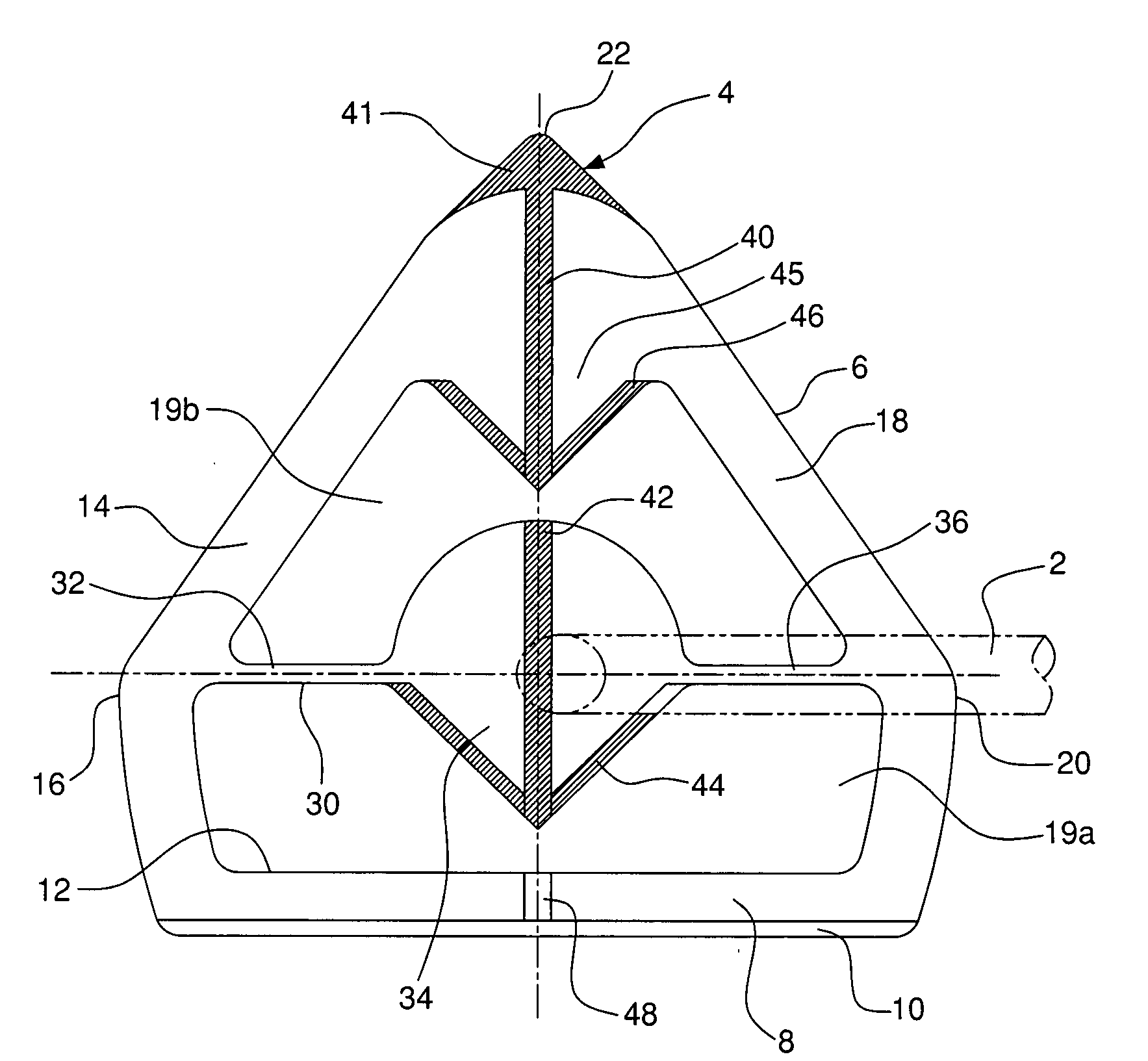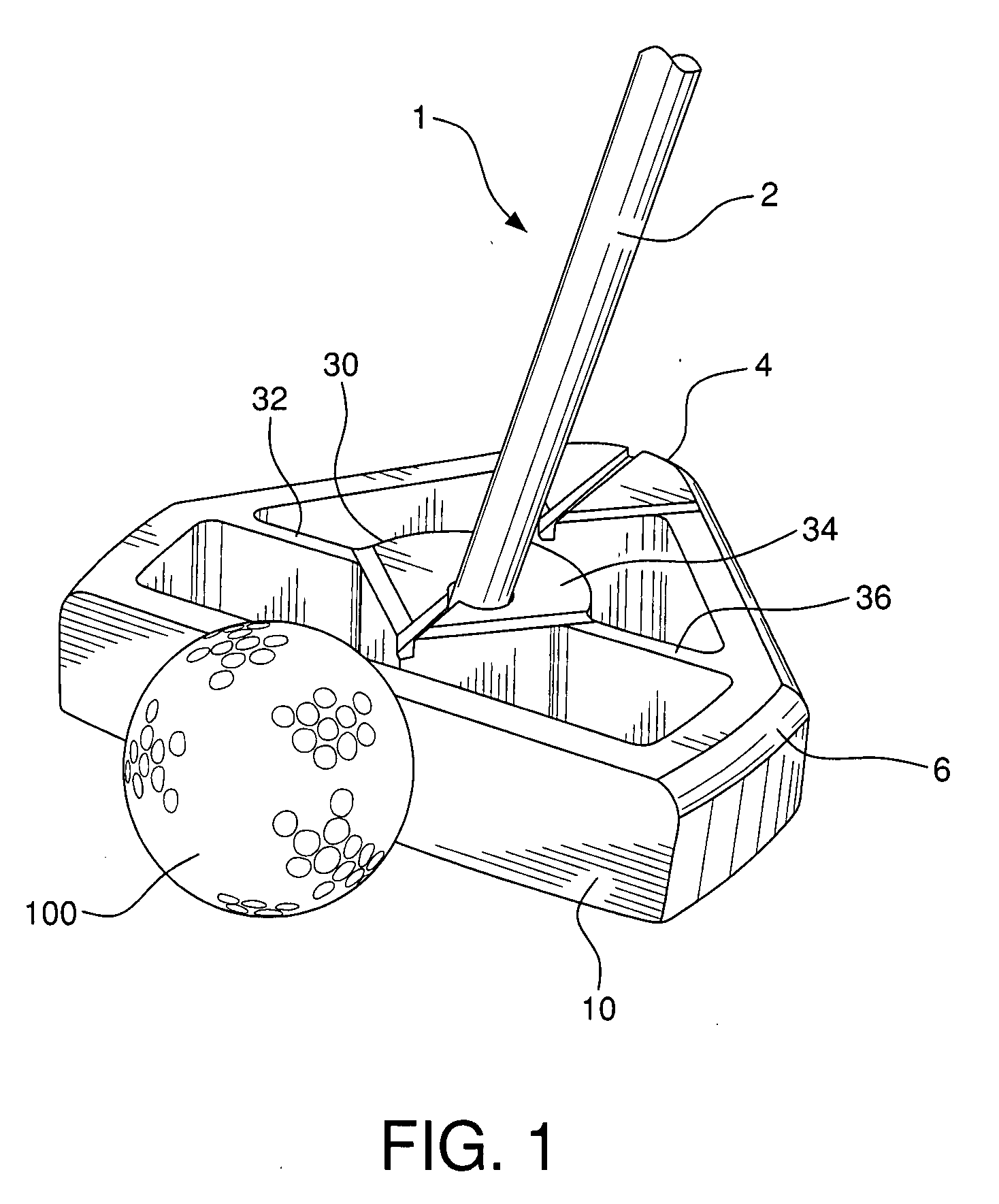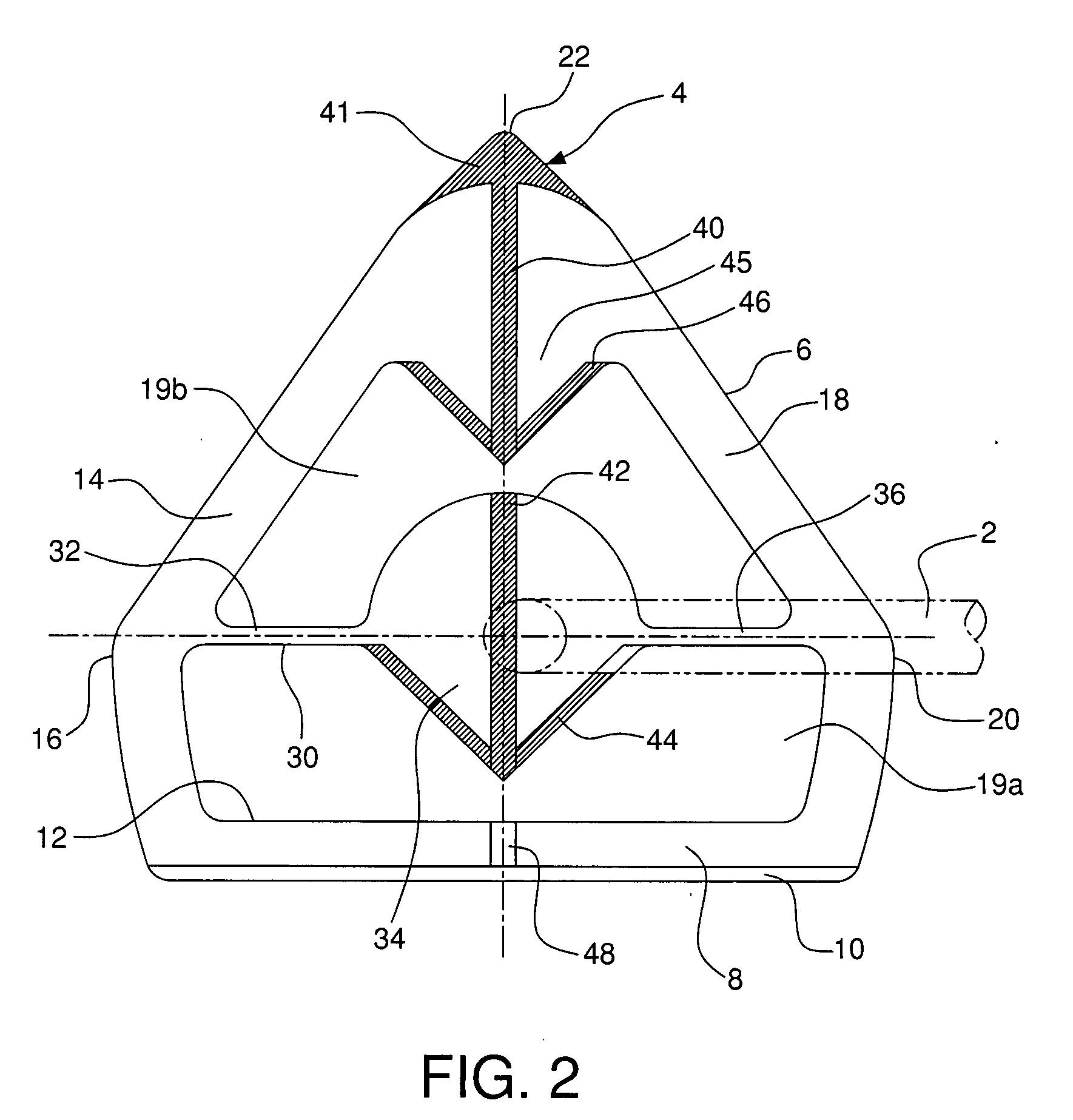Direction and distance correcting golf putter
a golf putter and distance correction technology, applied in the direction of golf clubs, racket sports, sport apparatus, etc., can solve the problems of repeated technique, exquisitely difficult task, and inability to achieve the same result, so as to reduce the magnitude of errors and achieve a larger degree of forgiveness
- Summary
- Abstract
- Description
- Claims
- Application Information
AI Technical Summary
Benefits of technology
Problems solved by technology
Method used
Image
Examples
Embodiment Construction
The Beam Putter
[0030]The preferred embodiment of the present invention, shown in FIGS. 1-4, comprises golf club 1 with golf shaft 2 and golf head 4. Head 4 can be provided with any number of different hosel designs and connections well-known in the industry and accepted by the USGA. While the shafts used on most standard putters fall in the 17-18 degree angle range, USGA requirements state that when a putter is soled to the putting surface in the normal manner, the shaft must have a tilt angle greater than 10 degrees from the vertical axis.
[0031]Head 4 of the present invention comprises unitary body 6 with transversely extending front member 8 having ball impact surface or face 10 and opposite back surface 12. As seen most clearly in FIG. 4, face 10 is offset at a slight angle 5, e.g. 4 degrees, from the vertical axis. Extending from member 8 are forward perimeter wall member 14 having forward section 16 and rear perimeter wall member 18 having rearward section 20. Wall members 14 a...
PUM
 Login to View More
Login to View More Abstract
Description
Claims
Application Information
 Login to View More
Login to View More - R&D
- Intellectual Property
- Life Sciences
- Materials
- Tech Scout
- Unparalleled Data Quality
- Higher Quality Content
- 60% Fewer Hallucinations
Browse by: Latest US Patents, China's latest patents, Technical Efficacy Thesaurus, Application Domain, Technology Topic, Popular Technical Reports.
© 2025 PatSnap. All rights reserved.Legal|Privacy policy|Modern Slavery Act Transparency Statement|Sitemap|About US| Contact US: help@patsnap.com



